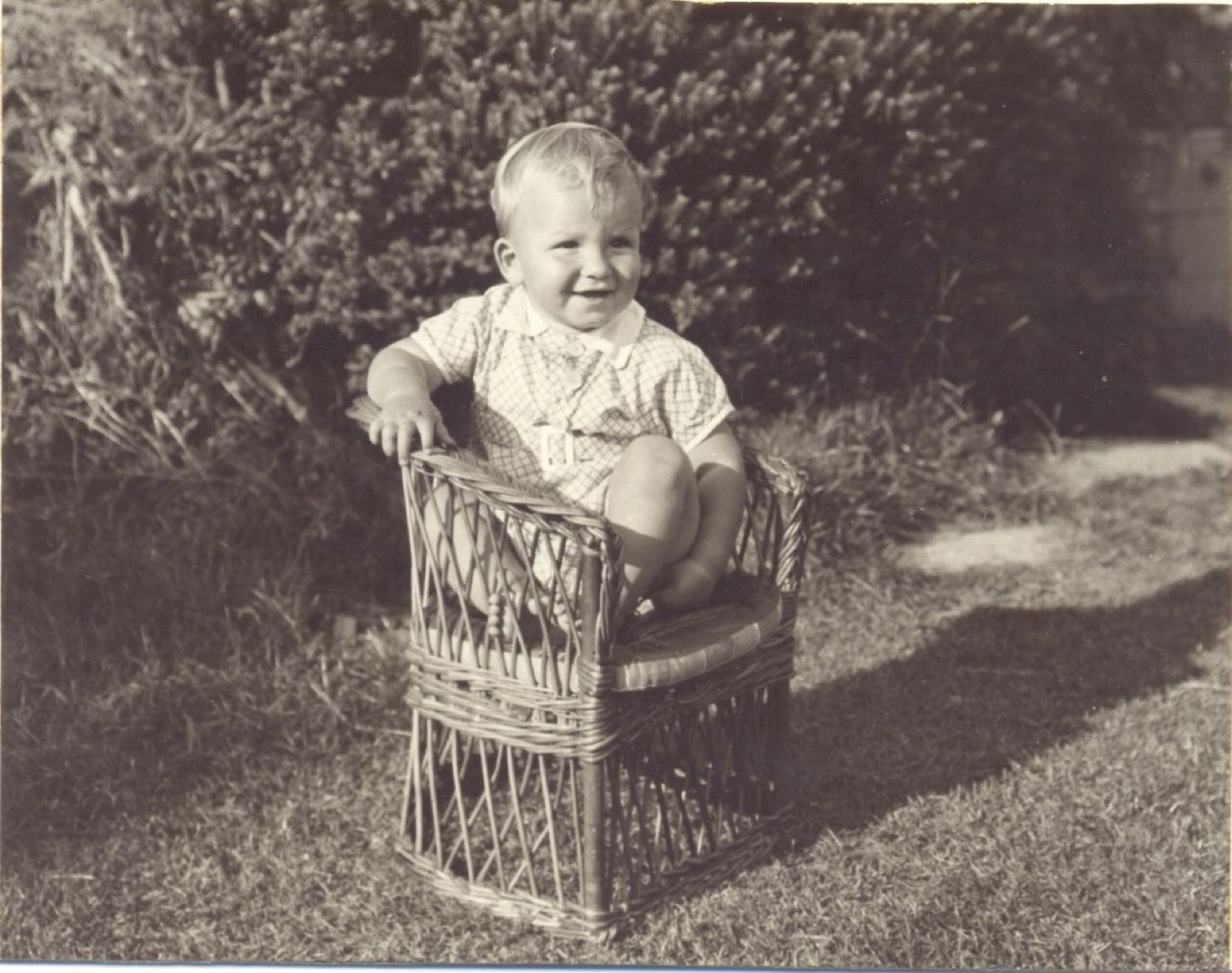My earliest memory is being carried up a spiral staircase by a man in a peaked cap to see a complicated structure made of glass. This could only have been a lighthouse and the man in the peaked cap the lighthouse keeper. It must have been on a family holiday to the Isle of Wight in about 1937. If so, it is a remarkable memory for a child only 2½ years old and may be a ‘received memory’ apparently recalled after the event by parents who retold the story.
I was born on March 12th1935 at 25 Cannon Lane in Pinner, a prosperous and leafy suburb some 15 miles to the northwest of London. My parents, John Michael Kingsley Saunders and his wife, Norah Mary Scott, had met at Boots the Chemists in Piccadilly Circus, and then moved to Pinner in the early 1930s when my father was appointed Manager of the branch of Boots in Bridge Street. Within a couple of years my parents, my elder sister Mary, and I had moved a mile or so to 27 Cannonbury Avenue which became my childhood home for the next 17 years. In 1954 we moved again to 22 Francis Road where I stayed until leaving home in 1958 for my first job.

In the garden at 25 Cannon Lane, Pinner, in 1936, aged 17 months.
I was too young to be aware of the momentous political events taking place in Europe in the late 1930s, or of the outbreak of the Second World War in September 1939. As I was still under 5 years old at this time, I initially qualified for a Mickey Mouse gasmask – designed to persuade younger children to wear what was envisaged as essential protection. When I started school at Cannon Lane Primary, whose entrance was just a few hundred yards down Cannonbury Avenue, I graduated to a more ‘grown-up’ gasmask which had to be carried at all times in case of an air raid. By the time I started school in 1940 my elder sister, Mary, was already an experienced pupil at Cannon Lane. She introduced me one day to her teacher, and I remember standing by her desk, nervously tearing the corner of the attendance register!
The war in north-west London was comparatively quiet, apart from some incendiary bombs at the beginning, until the arrival of the ‘doodlebugs’ towards the end. One incendiary bomb actually fell on the school causing some damage to a few classrooms, rather like a similar event in John Boorman’s evocative film Hope and Glory (shades of “Thank you, Adolf!”). I do, however, remember being held aloft by my father in December 1940 to see the red glow in the sky over London, 15 miles away, when the City suffered a particularly bad bombing attack. One of our pastimes was collecting shrapnel often soon after it had fallen from the sky, sometimes when it was still hot. I had quite a collection, stored in a shoebox under my bed.
The winter of 1940 to 1941 was colder than most, with several substantial falls of snow. At that time, being only 5 years old I tended to follow my sister and her friends, much to their annoyance, like a little lost lamb. On one cold morning I fell through the ice of the paddling pool in the local recreation ground (luckily it was only about a foot deep) and had to be escorted home. Later I found my own gang of friends down Cannonbury Avenue and we modelled ourselves on Just William and his gang. I was appointed “Ginger”, the role of William being reserved for the local tough guy, Rodney.
In 1944 the flying bombs (‘doodlebugs’) started to arrive. Most were aimed at London itself, but several overshot to land in our area. After one came down near Harefield we cycled out to inspect the crater. The war came to an end in Europe in May 1945 and Cannonbury Avenue, like most other streets in the country, had its celebratory party. The war in the Far East lingered on until August when it was abruptly terminated by the two atomic bombs dropped on Japan. I remember my grandfather saying, “Now they have done it; things will never be the same again!”
Class sizes at Cannon Lane increased steadily during the war, no doubt because many of the teachers were required in the forces. By 1945 I was one of a class of 50. Being rather a lazy child, only working hard at things that interested me, I found myself 48th in the class of 50 at the end of one term, and it seemed to be touch and go whether I would pass the 11-plus, the passport to a Grammar school education.
